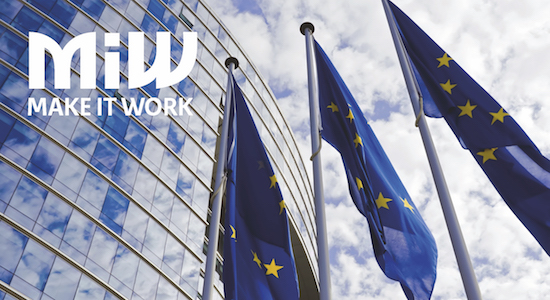Environmental Governance
Our Work
Latest in Environmental Governance
-
Protecting the interests of future generations
Do future generations get a fair deal from the policy decisions we make now? A new IEEP report for the World Future Council launched today suggests not.
-
The Manual: Chapter 1 - Policy framework
This is a chapter of IEEP’s Manual of European Environmental Policy. In this chapter, the reader is introduced to European environmental policy, EU institutions and agencies, and the development of EU treaties.
-
The Manual: Front pages
This is a chapter of IEEP’s Manual of European Environmental Policy. This chapter provides information on the authors, editors and editorial board involved in the Manual, as well as guidance on how to use it, and a brief outline of its content.
-
The Manual: Chapter 7 - Resource use
This is a chapter of IEEP’s Manual of European Environmental Policy. This is a chapter of IEEP’s Manual of European Environmental Policy. This chapter illustrates the variety of EU laws, policies and guidance documents that have been adopted to improve the efficiency of our use of natural resources and to reduce environmental impacts throughout a product's life cycle.
-
Reforming environmental taxes and harmful subsidies: challenges and opportunities
This policy paper provides a brief introduction and overview to the issues of environmental tax reform and environmentally harmful subsidies and outlines recent developments in the EU. It also outlines the remaining challenges in these areas and the potential role of the 7th EAP in helping to deliver the ETR and EHS agendas.
-
Commissioner Potočnik opens IEEP conference in Brussels
IEEP organised a high-level conference on ‘Stepping up action for Europe’s environment’ on 4 December. The conference brought together a number of prominent speakers and participants from policy, business, academia and NGOs to reflect on the challenges and opportunities currently facing the EU and key priorities for the future.
-
Running out of time? Stepping up action for Europe's environment
New report by IEEP launched at high-level conference in Brussels.
-
Exploring key priorities and actions for the 7th EAP
This policy paper examines how the forthcoming 7EAP can contribute to protecting natural systems and improving the way in which we use natural resources. It also examines a number of cross-cutting actions needed to support the priorities of the 7EAP and ensure better delivery of EU environment policy.
-
Assessment of the 6th Environment Action Programme
This report presents the results of an independent evaluation of the 6th Environment Action Programme (6EAP). The overall objective of this evaluation was to provide an in-depth assessment of the achievements of the 6EAP since its adoption in 2002 to the end of 2010.
-
Drowning in Process? The Implementation of the EU's 6th Environmental Action Programme
This study evaluates the implementation of the 6EAP across all four of its ‘key environmental priorities’...
-
The Impact of Better Regulation on EU Environmental Policy under the Sixth Environment Action Programme
A part of a series of strategic analyses evaluating the Sixth Environment Action Programme this report evaluates how Better Regulation approaches have shaped the implementation of the objectives set out in the 6EAP in the process of their translation into legislative measures...
-
IEEP study on 6EAP to be discussed at EP workshop on 21 November
IEEP, together with Ecologic, SYKE, BIO IS and IVM, has drawn up a report, which provides an independent assessment of the achievements of the 6th Environmental Action Programme (6EAP) across all four ...
-
Press Release: Report on implementation of 6EAP
The European Environmental Bureau (EEB) has today released a report prepared by IEEP on the implementation of the EU's 6th Environmental Action Programme (6EAP). Agreed in 2002, the 6EAP sets out priority ...
Related

Make it Work project for smarter EU environmental law
The Make it Work project is an initiative of the Netherlands, UK and Germany, supported by IEEP, to deliver higher quality EU environmental law and so help deliver the benefits of that law.

Charting Europe’s Environmental Policy Future
Advancing the debate on the future strategic framework of EU environmental policy by analysing the needs, priorities and delivery mechanisms of a 7th EAP.
